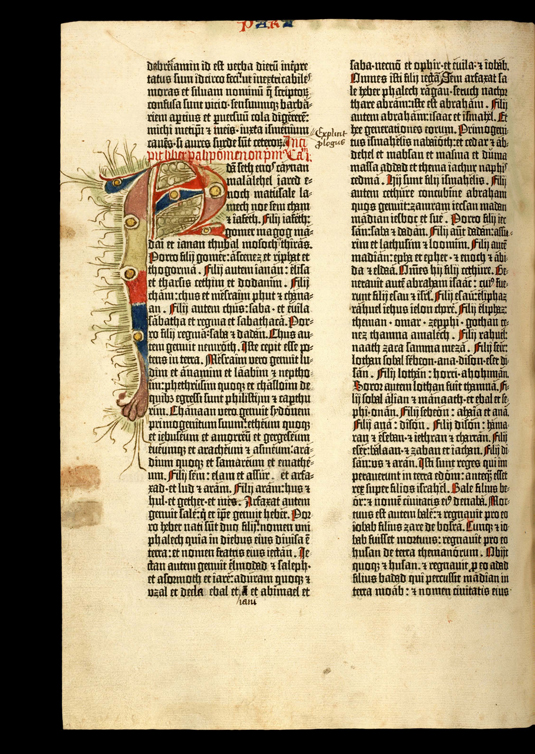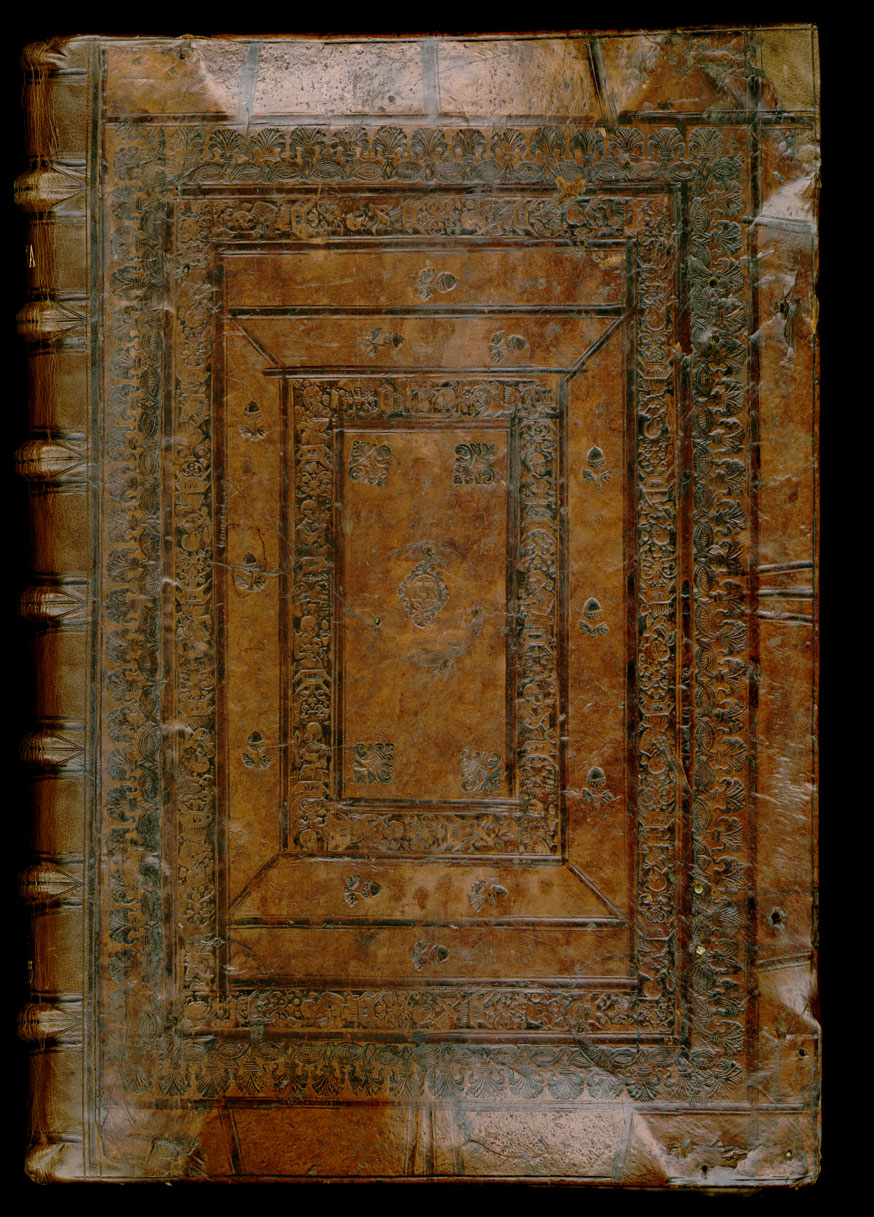The Ransom Center’s two-volume Gutenberg Bible is on permanent display. Every few months the Center’s staff changes the opening, allowing visitors to see different pages and to protect the volumes from overexposure to light. The process of turning the Bible’s pages involves the preservation and conservation division, exhibition services, curators, and security staff.
Eric White, Curator of Rare Books at Princeton University, will be speaking about the Ransom Center’s Gutenberg Bible on Thursday, February 9, at 7 p.m. CST, with a reception to follow. The event will also be livestreamed via the Ransom Center’s Facebook page.
In advance of his talk, White worked with the Center to select a page for display. Below, White elaborates on the exhibited page in volume I and the binding of volume II.

Biblia latina [The “42-Line Bible”]. [Mainz: Johannes Gutenberg, for Johann Fust, ca. 1455]. In Latin. Printed with moveable types on paper; with hand decoration (volume I).
After the sheets of the Gutenberg Bibles came off the press and were collated into unbound volumes, the scribes would add numerous headings in red ink—a process called rubrication—and other artisans would paint with gold—a process known as illumination—large initials into the empty spaces left for them at the beginning of each book of the Bible. When this extensive work was done, the Bible was bound in the sturdy covers that made it ready for use. Whereas the style of the rubrication and large initials in the Ransom Center’s copy is very neat and handsome at the beginning of the Bible, it changes dramatically after the end of the first ten-leaf gathering. Scholars have characterized the decoration found throughout the rest of the first volume as “bizarre.” The initials in this second style feature unfamiliar shapes, unexpected color combinations, and idiosyncratic marginal elaborations. For example, the red, blue, ochre, and puce initial that begins the book of I Chronicles is a strange creation that almost certainly began its life as some other letter than the intended A for Adam.
Scholars remain uncertain where this work was executed; guesses have included the area around Cologne on the Rhine or somewhere in Italy, Bohemia (near Prague), or southeastern Europe. The Bible’s rustic decoration has defied assignment to a particular artistic center precisely because it does not reflect the mainstream artistic tradition of any region. Hasty and exuberant, this second phase of decoration was probably that of a monastic artisan from a relatively remote area with limited training and worldly contact, who worked in isolation within his or her own untrained vernacular style.
Biblia latina [The “42-Line Bible”]. [Mainz: Johannes Gutenberg, for Johann Fust, ca. 1455]. Bound after 1564 in brown calfskin over wooden boards, blind-tooled with decorative stamps and rolls (volume II).
This is not the first binding that the Ransom Center’s copy of the Gutenberg Bible ever had, having replaced at least one earlier binding toward the end of the sixteenth century. Its central panel bears a stamp with the “IHS” monogram denoting the first three letters of the Greek name of Jesus, surmounted by a cross with the sacred heart and three nails below—the symbol of the Society of Jesus. This stamp and a seventeenth-century ink inscription with the “IHS” monogram (on the first page of Acts of the Apostles, vol. II: 609r) probably indicate that the second volume (if not also the first) was used by and rebound for a Jesuit college. Surrounding the “IHS” stamp are four foliate corner ornaments, numerous blind-stamped acorns, and two roll-tooled friezes, one with vegetal cresting and another depicting a set of female Virtues: Faith, Hope, Charity, Justice, and Prudence. Traces of two now-missing metal clasps are visible on the upper and lower covers.

In 2015 it was noticed that one of the bookbinder’s tools—that used to create the allegorical Virtues frieze—also bears the monogram “NP” and the date 1564. Interestingly, the binding for the Bible’s first volume, although different in design and decoration, also bears a (different) roll signed “NP,” as well as the date “1600.” Recent investigations have identified several other late sixteenth-century book bindings that utilized the same decorative tools as those found on volume II, including the “NP” Virtues roll, the cresting roll, the foliate cornerpiece, and the Jesuit monogram. Further study of these (and perhaps other) bindings will point to a convincing localization for the Jesuits who appear to have owned and used this copy of the Gutenberg Bible around the year 1600.
Related content:
Explore prior displayed pages of the Gutenberg Bible.

